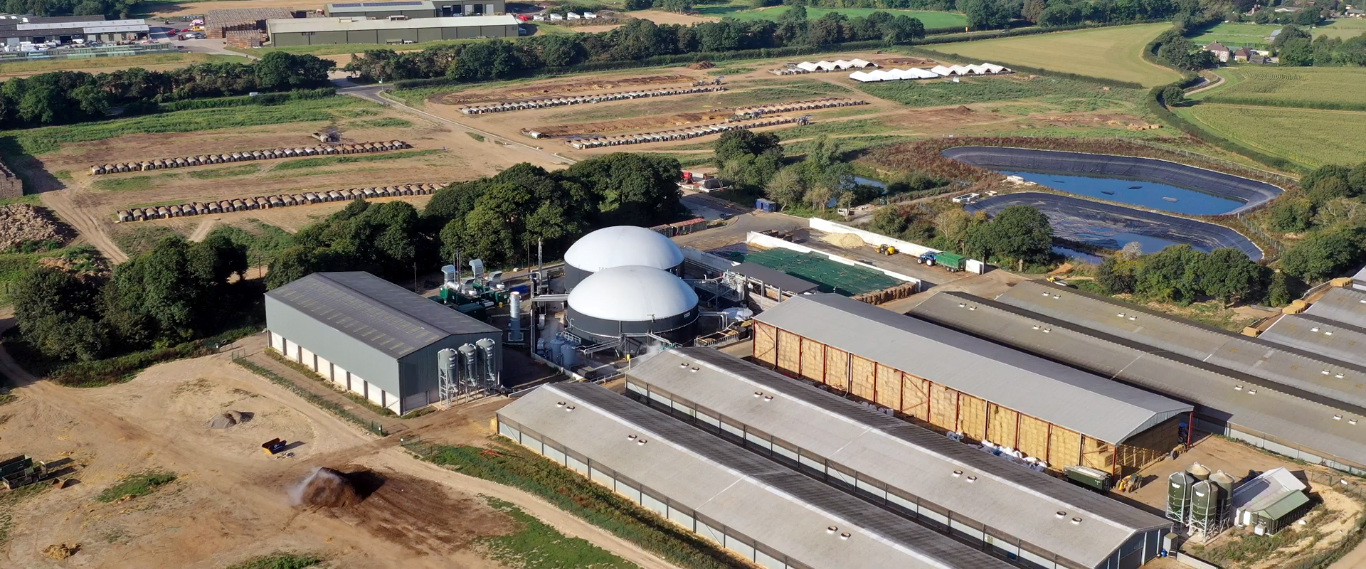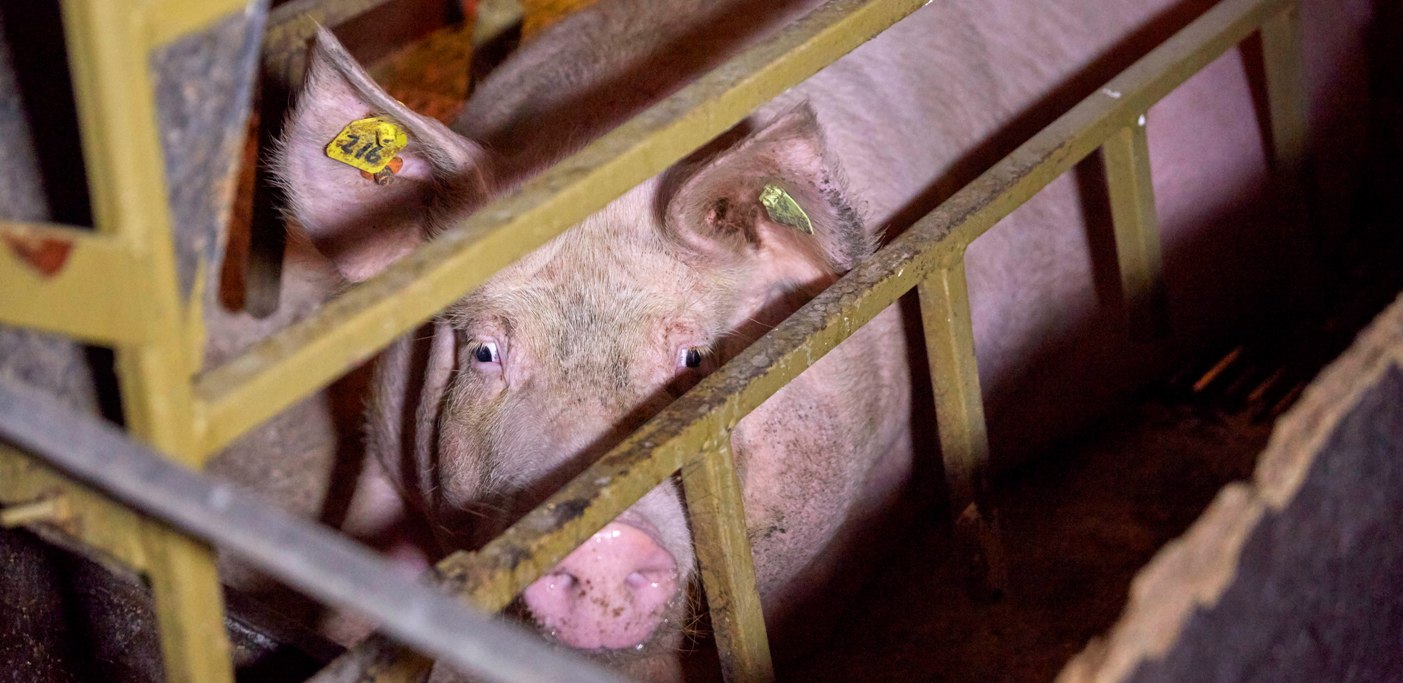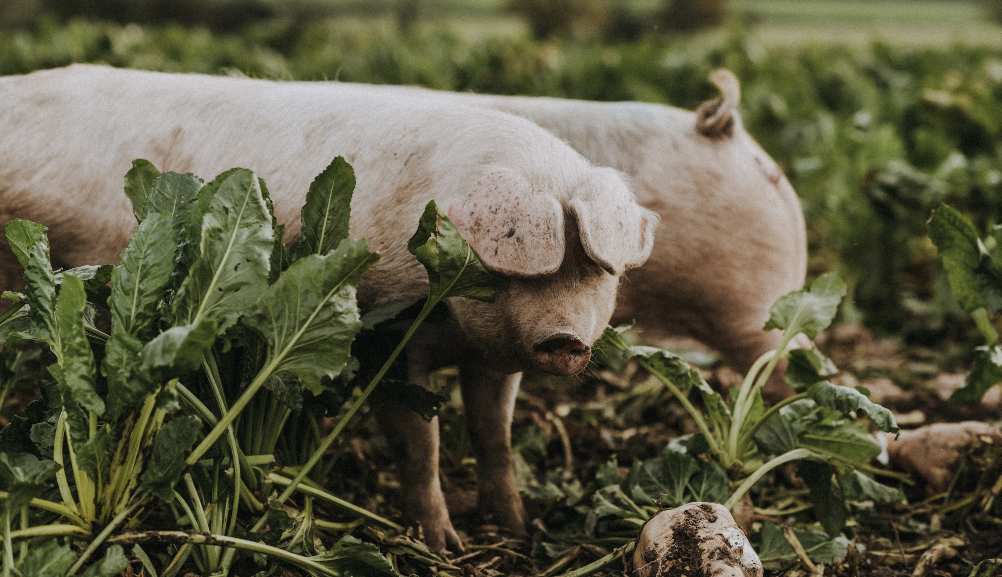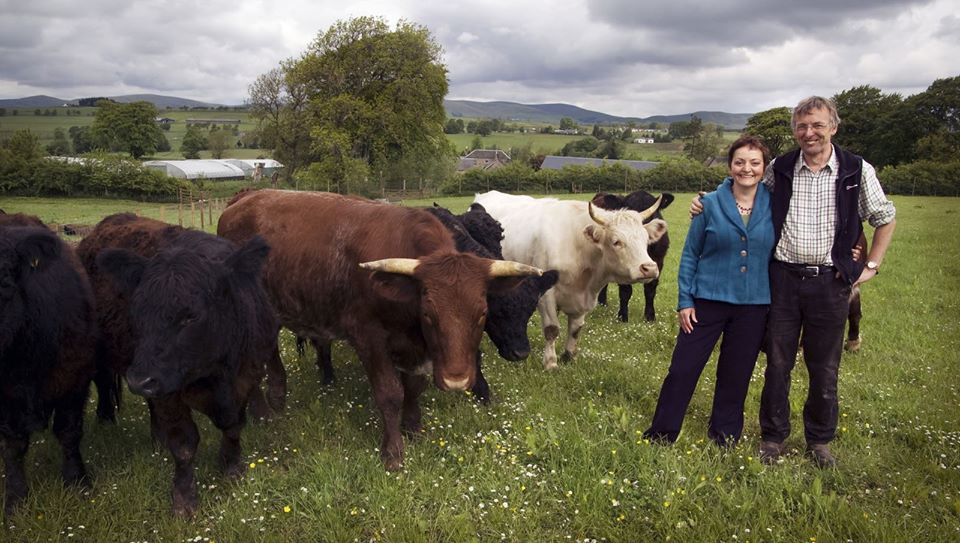Industrial pig production is a system designed for maximum efficiency, producing as much yield and profit as possible. This model reduces the animal to a unit of production in an equation of inputs and outputs rather than a sentient being with physical and psychological needs[1] . Animal factories are thus inherently at odds with the well being of pigs, where the maximisation of efficiency and cost-effectiveness always conflicts with animal welfare.
THE SITUATION
- In the UK about a quarter of our pork comes from high welfare, outdoor farms. The rest comes from factory systems in the UK and abroad. Around 70% of imported pork comes from systems that are not allowed in the UK. The welfare standards in animal factories are at best, minimal, and at their worst, squalid and illegal, as has been shown by a number of investigations. [3][4][6].
- For years extreme confinement in gestation crates (below) has been standard practice in animal factories. EU legislation still allows sows to be confined in gestation or farrowing crates, too narrow for them to turn around, for up to 5 months every year[3]. In the UK this has been reduced to 3 months per year.
- Although both EU and UK law requires that pigs must have access to straw or similar bedding, the majority of pigs in animal factories are kept on bare slatted concrete floors. In their natural outdoor environment pigs spend up to 50% of their time using their snouts to forage and root in the soil, but such behaviour is impossible in the confines of a concrete and metal-barred crate [5]. The stress and frustration drives pigs to bite the bars of their enclosures so incessantly that blood coats the front of their crates. The confined quarters also result in pressure sores and ulcers from not being able to move. Untreated abscesses and various infected wounds are worsened by the bodyweight of pregnant pigs[6]. Confinement continues until the sow is ready to give birth, when she is transferred to a farrowing crate which confines her closely while allowing the piglets to suckle.
- Because of the overcrowded, stressful, unhealthy conditions in intensive indoor systems, and the early weaning of piglets before their immune system is fully developed, the pigs are given antibiotics routinely. In the UK 30% of all antibiotics are given to pigs in factory systems, whereas pigs raised outdoors require hardly any antibiotics at all.
ABHORRENT CONDITIONS
The Humane Society [7] conducted an undercover investigation into a breeding facility belonging to the giant US pork producer Smithfield Foods, to verify Smithfield’s pledge to phase out its use of gestation crates. The investigation revealed systematic abuse against the pigs far beyond the misery of the extreme confinement of gestation crates. The workers at the breeding plant were seen to treat the pigs with neglect and malice, with the investigator recounting a pig being stunned and thrown into waste bin whilst alive and breathing. At a different breeding plant, a pile of 20 dead pigs was found, along with dustbins full of empty medication bottles for diseases with symptoms that include diarrhoea, respiratory problems, intestinal lesions, among others [8]. The poorly ventilated quarters, rife with bacteria and filth, has been shown to cause lung damage and pneumonia among pigs from animal factories, with 40-80% of pigs, depending on conditions, showing lesions in their lungs at the time of slaughter [8].
SYSTEMATIC MUTILATION
The stress, boredom, overcrowding and frustration of close confinement drives pigs to bite off each other’s tails. Indoor, intensive producers deal with this problem by docking (cutting off) pigs’ tails. Both EU and UK law forbids routine tail docking and says that the cause of tail biting must be addressed by, for example, providing bedding materials for rooting and nesting, and reducing the stocking density [9]. However these laws are widely ignored and routine tail docking is systematic in low-welfare animal factory systems. Compassion In World Farming (CIWF) has found numerous and persistent cases of non-compliance with EU legislation for animal welfare in member states across the EU [3][4]. In 2009 [3] [6] CIWF found that 100% of farms visited in the Netherlands and Spain had a significant number of tail-docked pigs present, and a follow up report in 2014 [4] found that problems still persisted in the two member states, as well as the UK, Poland, the Netherlands, Italy, Ireland and France.
THE CHOICE IS WITH THE CONSUMER
Animal factories, in which pigs suffer the abhorrent and deplorable conditions described above, only persist because consumers are not aware how so-called cheap pork is produced. There are hidden costs to this cheap meat, in the form of animal suffering, but also the suffering of humans, communities and the environment, who all pay the price from meat produced in this industrialised system. In the UK farrowing crates are not used in pork production under the labels FreedomFood, Outdoor Bred, Free Range and Organic. In the UK 40% of the sows (mother pigs) have outdoor space to move about, explore and wallow in mud (for more information on organic and other high welfare standards see the ‘Labelling’ section of the Pig Pledge website). Animal abuse can therefore be avoided by buying high welfare pork and supporting farmers that are producing pork in high welfare systems, shifting demand away from animal factories.
FOOTNOTES
[1] CIWF, (2009) Beyond Factory Farming (http://www.ciwf.org.uk/includes/documents/cm_docs/2010/b/beyond_factory_farming_report_2009_exec_main_final.pdf)
[2] http://www.ciwf.org.uk/news/2014/08/european-pig-farming-shame/
[3] CIWF, (2009) Pigs Farming in the EU (http://www.ciwf.org.uk/includes/documents/cm_docs/2010/e/eu_pig_farming_briefing_jan_2010.pdf)
[4] CIWF (2014), Lack of Compliance with the Pigs Directive continues (http://www.ciwf.org.uk/media/5508030/lack-of-compliance-with-the-pigs-directive-continues-urgent-need-for-change.pdf)
[5] Silva, J. (2006) Adverse Impact of Industrial Animal Agriculture on the Health and Welfare of Farmed Animals, Integrative Zoology (1): 53-58
[6] The Humane Society, (2010) Undercover at Smithfield Foods (http://www.humanesociety.org/assets/pdfs/farm/smithfield_2010.pdf)
http://www.ciwf.org.uk/media/3818889/welfare-of-pigs-in-the-european-union.pdf
[7] Animal Aid (2009), Pig Report (http://www.animalaid.org.uk/images/pdf/Pigreport.pdf)
[8] Sustainable Table, Animal Welfare (http://www.sustainabletable.org/274/animal-welfare)
[9] CIWF (2008), Pig Welfare (http://www.ciwf.org.uk/includes/documents/cm_docs/2008/p/pigwelfarenpapositionpaper2008.pdf)
Share This Article
Related ArticlesView All
Anaerobic Digesters Facilitating UK Factory Farm Expansion
Malcolm McAllister, CEO of Farm Renewables UK, paints a rosy picture of the anaerobic digester (AD) plants which his company… Read More
Is Red Tractor High Welfare?
When it comes to buying pork, the Red Tractor label does not offer any assurance that the pigs were raised… Read More
Cruel Farmers or a Cruel System?
The horror story experienced by US pig farmers who, between May and September, will have cruelly euthanized 10 million pigs,… Read More
Farm Expert Interview 6: Dr Immo Fiebrig
Dr. Immo Norman Fiebrig from Germany, a licensed pharmacist and PhD in biochemistry explains his ‘Corona Triangle Hypothesis’ where mapping… Read More
Farm Case Study 9: Pipers Farm, Devon
Peter at Pipers Farm rears free-range Saddleback pigs. His online business provides healthy, sustainable, high welfare meat straight to people’s… Read More
Farm Expert Interview 5: Pete Ritchie
Pete Ritchie, Executive Director of Nourish Scotland and owner of Whitmuir the Organic Place, speaks to us about the need… Read More







Comments